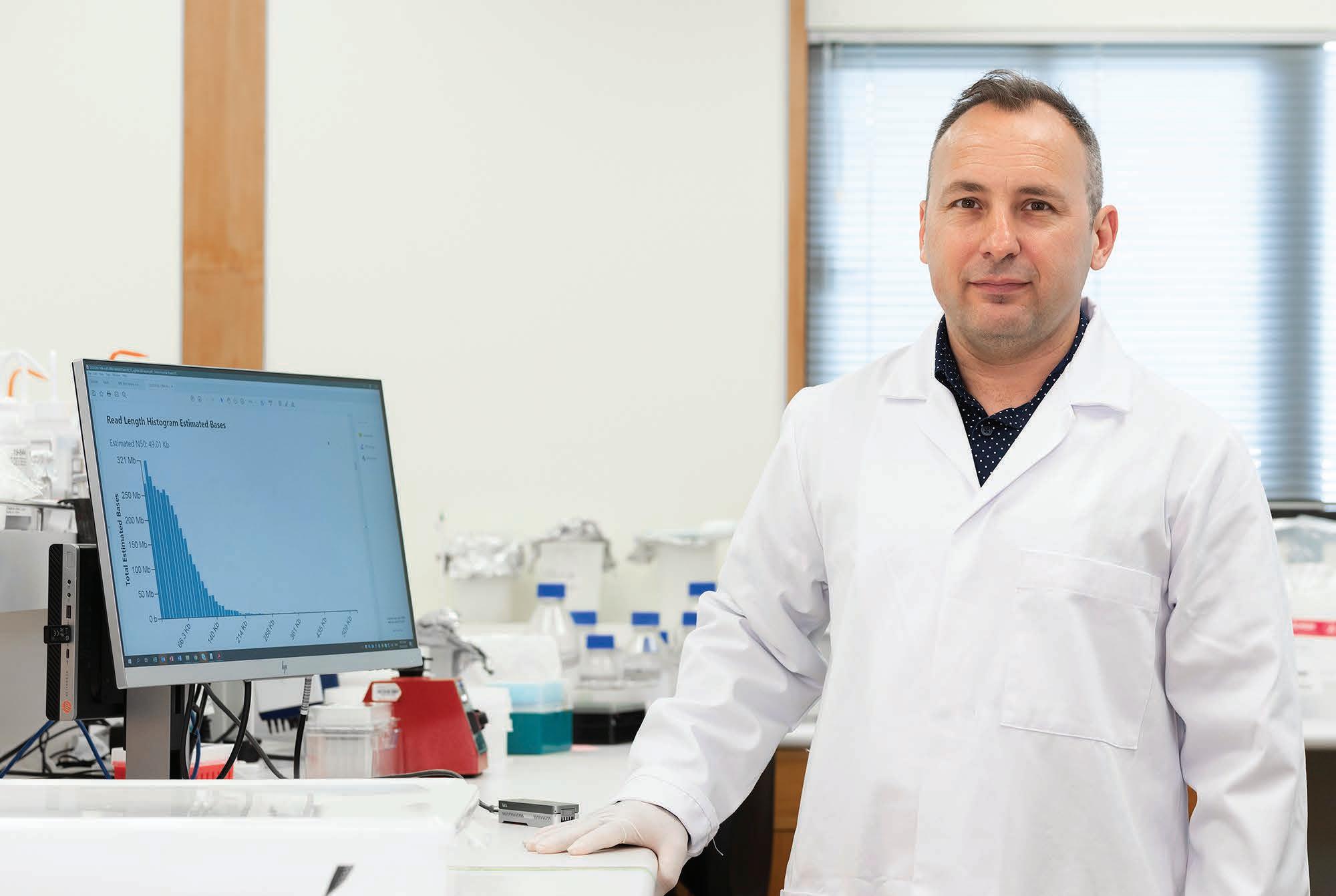
4 minute read
New Thinking
Deciphering native taonga
Cracking the genomic codes of New Zealand’s native taonga, including manuka and rewarewa, are proving valuable exercises not only for what they reveal, but for the skills fostered and a new sensitivity among researchers about the significance of taonga iwi. Richard Rennie reports.
ONLY three years ago it took researchers three months of focused supercomputing power to grind out the genomic code for the tree-killing fungus myrtle rust. But in the fastdeveloping area of genomic research, the timeframes are collapsing as rapidly as computer power expands. This is to the point Genomics Aotearoa’s researchers had the native rewarewa genome mapped in three days recently.
Genomics Aotearoa lead researcher David Chagné says rewarewa is the second significant indigenous tree after manuka to be accurately genome mapped. Swamp maire, a tree species threatened by myrtle rust, is the next to be done.
The genome mapping programme Genomics Aotearoa involves NZ universities and research institutes such as Plant & Food Research, Manaaki Whenua-Landcare Research and AgResearch.
It aims to map the genomes of indigenous plants and animals along with economically valuable crops, including kiwifruit, blueberries and fish. At the same time, it also aims to sharpen NZ researchers’ talents in the rapidly advancing science.
“All genomic mapping projects are dealing with large data sets; putting that together is a big task. We are able to bring all the latest tools and technologies to this field, and apply them to species that are important to New Zealand’s primary production and ecology,” Ann McCartney, researcher from Maanaki Whenua-Landcare Research, who led the mapping of the rewarewa genome, said.
“After the rewarewa genome project we now know how well these different computing tools work, and we can benchmark our supercomputer to make future genomic work easier with those tools.”
As a native of south-western France where food origin and authenticity is highly prized, it has not been an overly major shift in thinking for Chagné to be working incorporating iwi values of guardianship and respect into handling native species.
“We have a lot of engagement with iwi partners during the work on manuka and rewarewa, and very strong support for it,” Chagné said.
Iwi groups have recognised that better understanding of the genetic makeup of their taonga can help with economic development and brand identity for those with business units within their rohe. This applies particularly to those iwi with business interests in honey.
Like manuka, rewarewa lends itself well to being a separate honey ‘brand’, offering its own unique origin story and taste profile.
Chagné says understanding the genomics of indigenous species helps reinforce provenance protection and terroir identity, an area now in the spotlight with efforts to protect the manuka origins amid other countries’ claims to the species.
He is also part of a team working to put together genomic information that highlights the difference between NZ and Australian manuka.
He likens having a genome map to having a blueprint against which changes in the species can be compared to, whether as a result of climate change response, or natural mutation linked to key production traits.
However, in contrast to most conventional research, the rewarewa genomics is not 100% open for unbridled scrutiny by the scientific community.
“Iwi see how there is value in the genome map being available, but appreciate they may not see the benefit to them of it being openly available,” he said.
In keeping with Article 2 of the Treaty of Waitangi that grants iwi undisturbed possession of their taonga, anyone seeking access to the genomic code would have to demonstrate the benefits that this would incur for its iwi guardians.
“It is a different approach, it changes how researchers work and something my colleagues overseas would not have come across,” he said.
Other projects Chagné and his team are working on include one due for release in only a few weeks on the genomics of the ancestor to today’s apple, peach and strawberry species.
“This will help us understand how the apple tree came to form as a tree, and how the peach developed flesh,” he said.
Other work includes untangling the more complex multiple chromosome genomics of kiwifruit and blueberries. Known as polyploids for their multiple chromosomal sets consisting of two pairs from each parent, their study requires a step up in analytical skills and horsepower.
While some countries, including China, have embarked upon an ambitious plan to complete a “tree of life” genomic mapping programme, Chagné says NZ researchers were more focused on lifting their quality of genomics skills here, such as what was done with upskilling McCartney.
“And we have good talent coming through. We also want to work on upskilling more iwi in this area, working on having a more indigenous perception at the research level in what is a highly collaborative project,” he said.
MAPPED: Genomics Aotearoa lead researcher David Chagné says having the genomic map of native species will help preserve provenance claims.








